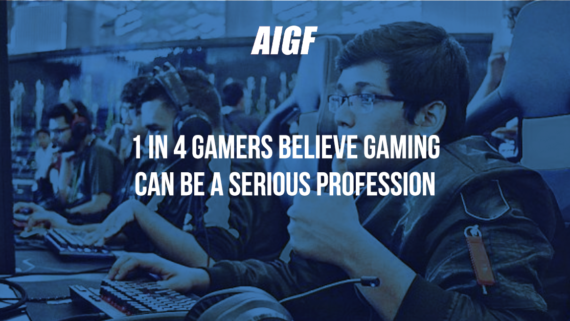In June 2021, KPMG depicted India as among the world’s fastest developing gaming markets, highlighting the business’ future potential. Add to that the 400-odd startups present in the sector, and you realize the sector is ablaze. The issue, in any case, is that the nation needs more talent to keep it consuming.
While India’s Got Talent, The Gaming Industry Struggles To Find It
Today, most startups in India are hoping to trim their workforce and slice down expenditure to weather the subsidizing emergency that has struck the business hard. Industry gauges suggest more than 7,000 individuals have proactively lost their jobs in the environment, with a lot more gazing at a questionable future.
Against this background, there is one group of startups that stands out as an unmistakable difference—the gaming startups, where there are occupations galore and founders are continually exploring for talent. Nonetheless, the space is plagued by a serious ongoing issue of its own: a talent shortage.
This crunch also occurs at a time when organizations are only beginning to grasp the enormous open door and potential for gaming in the country. The section developed by leaps and bounds during the pandemic, both in India and worldwide. An expansion in the number of wireless internet users, a developing cell phone base, and changes in the perception of gaming as a means of entertainment have just fueled the sector’s development.
The numbers are comparably noteworthy. With 420 million casual online gamers, India is second only to China. The Indian online gaming sector came to $1.03 billion in 2020, a development of 17.3% from $543 million in 2016. With its ongoing direction, it is normal to reach $2 billion by 2023 as long as rake fees are procured, according to an EY-All India Gaming Federation (AIGF) report titled Online Gaming in India-The GST Conundrum. In June 2021, KPMG depicted India as among the world’s fastest developing gaming markets, highlighting the business’ future potential. Add to that the 400-odd startups present in the sector, and you realize the sector is ablaze. The issue, in any case, is that the nation needs more talent to keep it consuming.
Recruiting Hurdles
With most organizations ramping up operations due to the sector’s expansion, the demand for game developers, game designers, front-end and back-end engineers, product managers, 3D modelers, character animation specialists, and those with experience in-game logic and graphic design has skyrocketed.
While there has been advancement on the product side, the business surely faces a talent crunch, taking everything into account, says Roland Landers, CEO, AIGF. “Evolution is going on the innovation side, which is hurling interest for new talent, especially in the space of live editing, production, and post-production. “With more than 200-300 game advancement organizations now in India, the demand for the right talent will just shoot further,” he says.
Metaverse, probably the most popular expression in present speech, has added one more layer of complexity. Gaming has arisen as one of the metaverse’s most critical use cases. The equivalent was affirmed by Microsoft executive and CEO Satya Nadella when he said, “Gaming is the most unique and exciting class in entertainment across all platforms today and will assume a vital part in the development of metaverse platforms,” while reporting the tech major’s plan to secure game distributor Activision Blizzard for $68.7 billion. The fame of Roblox, a gaming platform for youngsters, just affirms the capability of gaming in the metaverse. In any case, the metaverse includes cutting-edge innovations, for example, augmented reality, virtual reality, and 3D, making it harder to track down significant talent.
Underlining the talent issue, Saurabh Gupta, co-founder of Tamasha.live, a platform fabricating a cutting-edge gaming metaverse, says, “India’s gaming industry is still in its beginning phases with the majority of the activity occurring in the last 4-5 years.” Thus, there is an exceptionally restricted pool of senior gaming talent. ”
Remuneration could be another disadvantage, feels Murali Reddy, co-founder, and COO of Bullieverse, an open fantasy metaverse constructed uniquely for blockchain-based gamers and makers. “One thing is to find resources on the gaming side, while the other is to track down Web3 (third installment of the web) resources. Aside from developers in the gaming business, different talents, for example, level design, 3D character modeling, and so on, don’t draw in extraordinary remuneration. In this way, very few decide to take up that work,” he says.
While most industry players say that the remuneration in the gaming space is comparable to that in the IT sector, real figures don’t lay out that case. Saptarishi Ganguly, a Bengaluru-based game developer who finished a gaming certificate program in Japan before working a full-time profession in gaming, says the business has no set guidelines. “I was working all day with a gaming studio and got baffled with what I was being paid. “I’m a specialist now and earn 3x more than whatever I used to earn several years back,” he says, adding that his experience of working in Japan conceivably gives him an edge over some other local developers.
Looking Outward
One of the ways in which gaming organizations are attempting to plug the talent hole is by selecting experts from different nations.
Discussing Web3 organizations, Sunny Makroo, founder of Zippy, an organization fabricating a metaverse for runners, says there is a reasonable pattern of recruiting talent from worldwide areas. “As the design of these startups is decentralized, with most organizations offering super durable work-from-anywhere, they can get to areas, for example, eastern Europe and Southeast Asia, where great talent is accessible,” he says. While Makroo has not yet started recruiting from abroad, large numbers of his companions have been chasing after talent across borders.
For example, “We have a strong team of investors, makers, and developers, yet we need to employ game developers, 3D modelers, level designers, and character animation specialists from nations, for example, the UK, Peru, Ukraine, and Indonesia to address the needs of the platform,” says Bullieverse’s Reddy.
Gupta agrees, adding that while the greater part of his group is based out of India, finding talent for particular roles—for example, game designers and game makers—is a bit troublesome in India. “For junior roles, we have been employing people from non-gaming industries and furnishing them with the right training, assets, and instruments to assist them with adjusting to the gaming business. “The Philippines and Vietnam approach a great ability pool at reasonable costs,” he says.
Like Gupta, PR Rajendran, founder of Nextwave, a Nazara Technologies organization, has picked the training route and prefers training graduates for 6-8 months before retaining them in his organization. However, for a couple of advisory jobs, he, as well, needs to look abroad. We truly do employ consultants in certain classifications from abroad where we don’t have a skill or we need somebody in an advisory job. We do it on a time-bound basis. “Game developers, data science, product managers, game art — there is a steady battle to get and retain talent,” he says.
Indeed, even in the face of this pattern, Witzeal Technologies, a trendy gaming technology organization, says that it mindfully guarantees that it recruits only local talents—even from Tier II and Tier III urban cities. “We have confidence in building talent in-house with hands-on-the-job training. As far as we can tell throughout recent years, applicants from Tier II and Tier III urban cities have talent and the ideal skill sets, “says founder and CEO Ankur Singh.
Recruiting ability from different nations likewise includes some major disadvantages. “We could save something like 60–70% of the cash per asset if we could employ locally,” says Reddy. Gupta puts that figure at 20-25%. “The main thing about working with local talent is easy communication,” he adds.
Course Correction
Gupta of Tamasha.live says, beneficially, for a tonne of jobs, similar to game development and configuration, individuals can undoubtedly outfit themselves with relevant skills.
His statement additionally illuminates the gigantic industry-academic hole. None of the public authority-owned institutes or universities in India offer any courses in gaming. There are a few private institutes, for example, ICAT Design and Media College in Chennai, Maya Academy of Advanced Cinematics in Mumbai, Zee Institute of Creative Arts in Bengaluru, and Arena Animation focuses that give 6-12 months of courses in game designing, game development, and special effects, among others. Of late, some education experts have additionally begun giving courses connected with online gaming.
Bringing up how there are around 15,000 game developers in India when contrasted with 6,000,000 software engineers, Gupta says, “There is a tonne of space for development, taking into account the gaming industry has been one of the quickest developing industries over the most recent couple of years.”
Rajendran accepts that some issues can be tended to if institutes design courses in close coordination with the industry, guarantee internships, and keep up with transparency. “Our educational plan doesn’t uphold skills connected with the gaming industry. It may very well be worth it on the off chance that an educational program in gaming, not simply video games, is taught in schools,” says Reddy.
Credit: Outlook











Comments
Comments are closed.